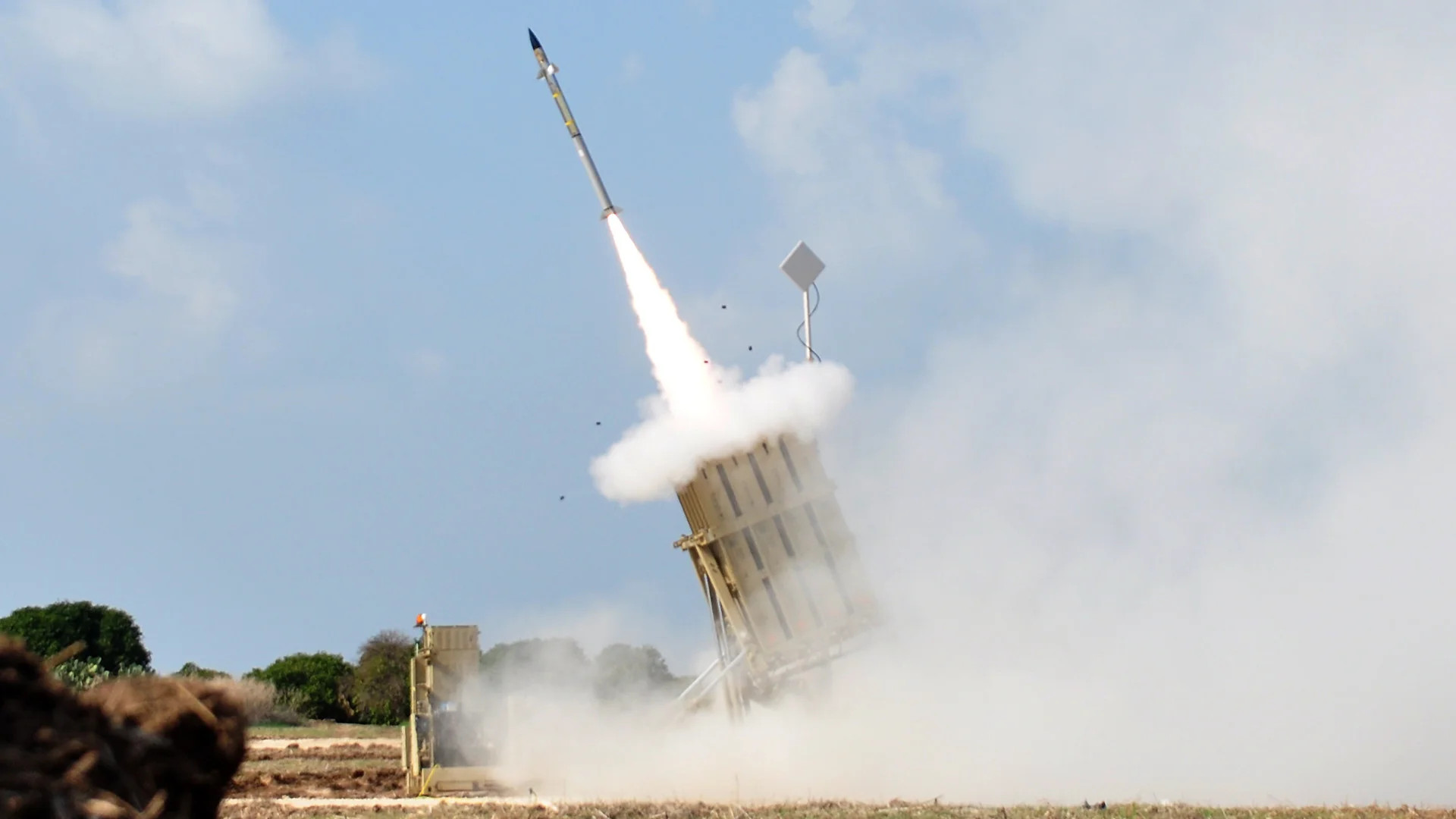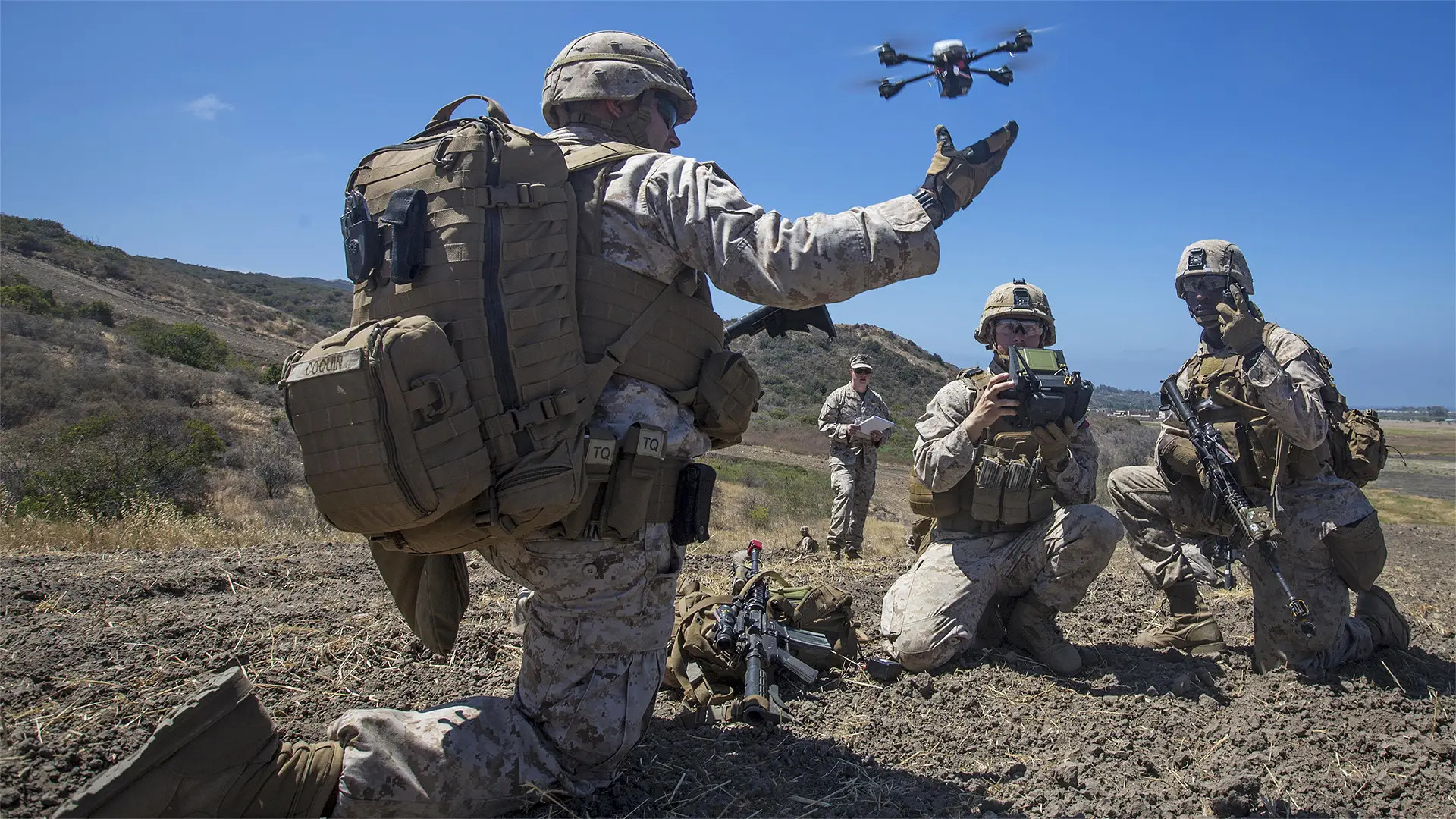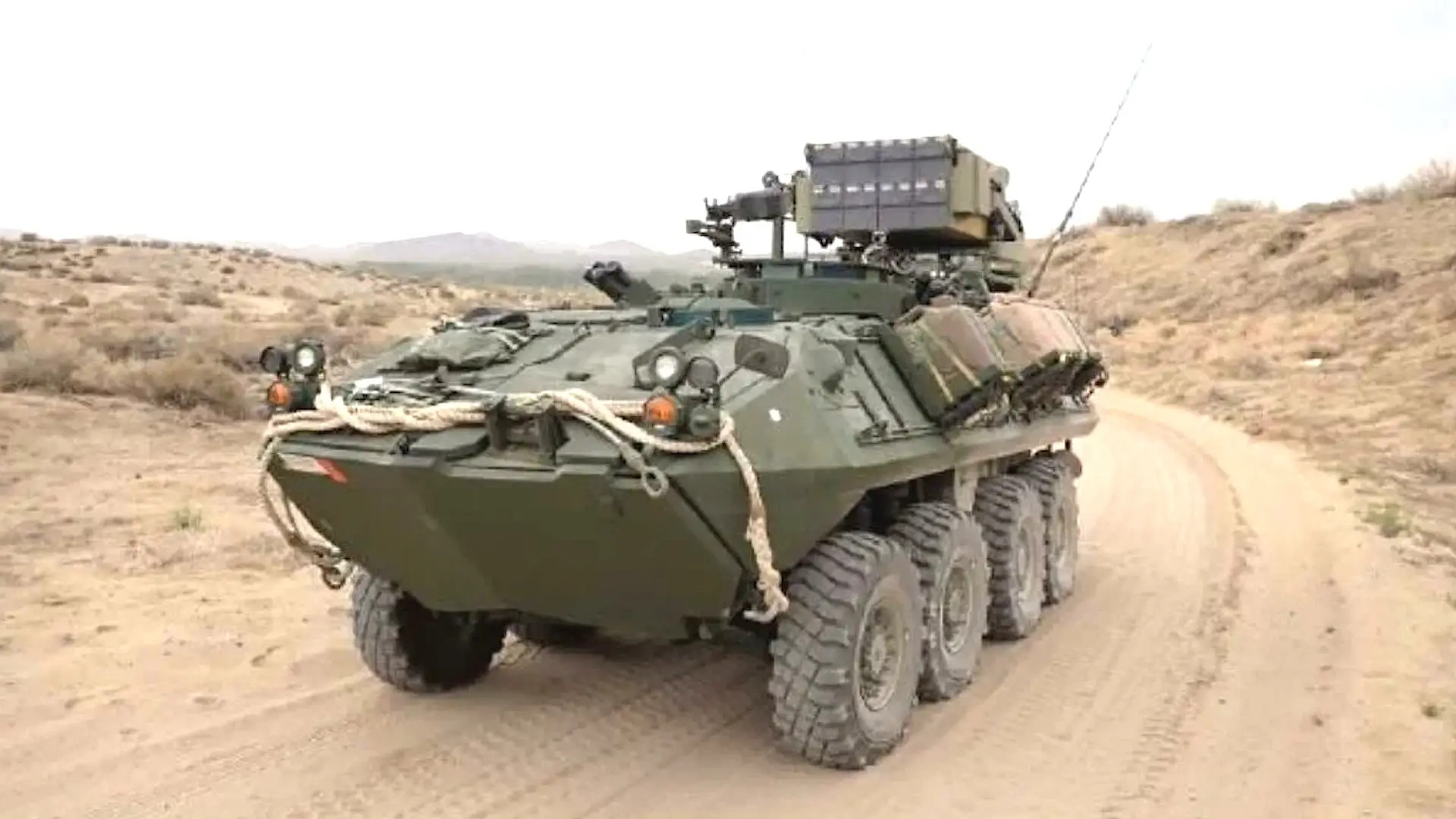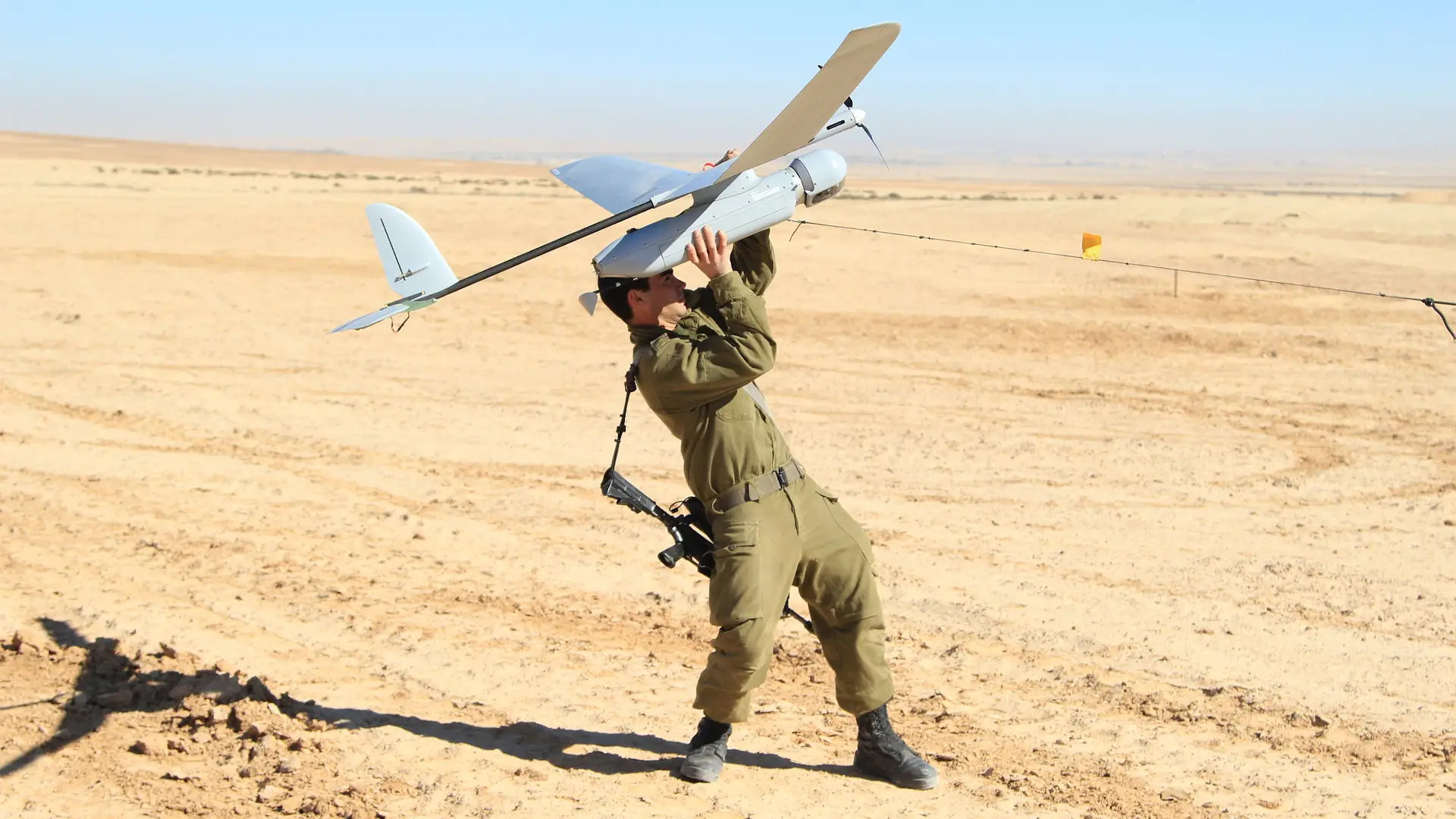The Israel Defense Forces (IDF) are knocking down a substantial number of their own drones in the course of operations, a U.S. Marine Corps officer has disclosed. This underscores serious challenges that air defense forces in the U.S. military also face in telling friendly and hostile drones apart as uncrewed aerial systems (UAS), as well as loitering munitions, become ever more ubiquitous even in operations involving very small units.
Marine Lt. Col. Michael Pruden, head of the Marine Air Command and Control Integration Branch of the Air Combat Element Division within the service’s Combat Development and Integration Command (CD&I), provided details about the IDF’s experiences to The War Zone and other attendees during a talk at the annual Modern Day Marine exposition yesterday. The Marine Corps is separately in the process of significantly expanding its air and missile defense forces and their capabilities, with a particular eye toward growing drone threats, as you can read more about here.
“Something interesting that comes from Israel, 40 percent, 40 percent [this figure was repeated for emphasis], of the UASs … knocked out” by Israel are instances of “friendly fire,” Pruden said.

Pruden did not contextualize this figure, such as where those shootdowns occurred or over what timeframe. He did imply that this data has come from recent Israeli operations, especially in the Gaza Strip, following the terrorist attacks on the southern end of the country last year. Hamas used drones in its initial attacks on October 7, 2023, and various Iranian-backed militant groups across the Middle East, as well as Iran itself, have since launched drone attacks on Israel.
“As Israel’s engaging in Gaza, and they’re on their front line, they see a small UAS, what are they going to do if it’s not identified immediately?” Pruden also said. “They’re going to shoot it down.”
Pruden added that this is the default course of action because the time between when a drone might be detected and when it could execute an attack of some kind is often measured in “seconds.”
Israel had faced myriad drone threats long before October 2023. The IDF has acknowledged accidental shootdowns of friendly drones in the past, as well. That being said, the IDF has arguably the most advanced integrated air defense system on the planet. So the fact that this is a huge issue for them, doesn’t bode well for other militaries.
Regardless, Pruden’s remarks yesterday make clear that rapidly discriminating between friendly and hostile UASs is a major issue for the IDF. It is also one that the Marine Corps and the rest of the U.S. military will increasingly have to contend with. Just in February, the German Navy’s Sachsen class frigate FGS Hessen almost shot down a U.S. MQ-9 Reaper drone flying over the Red Sea in a case of mistaken identity, underscoring the complexities that present in future operations, including ones involving foreign coalition partners.
In his talk, the Marine officer laid out a core problem as his service sees it: “How am I putting a small UAS in the sky, thousands of these things, and not telling anybody about it, especially your ground-based air defense and counter-UAS [elements]?”

The Marine Corps, as well as other branches of the U.S. military, are increasingly fielding smaller UASs to even very small units. The Marines are also pushing to field man-portable loitering munitions, also commonly referred to as kamikaze drones, along with launchers for these weapons on ground vehicles and uncrewed surface vessels.

Tiers of larger drones, including armed and cargo-carrying types, will also be in the mix. For the Marine Corps, uncrewed logistics platforms, in the air and at sea, are seen as a critical component of how service will sustain forces during future expeditionary and distributed operations. That planning is heavily centered on a potential island-hopping campaign scenario in the Pacific as part of a large-scale conflict with China.

Altogether, for the Marines, in particular, it is not hard to imagine future operations where the skies are full of hundreds, if not thousands of drones and loitering munitions all zooming about in different directions and performing a host of different tasks. Discriminating between friend and foe could be particularly problematic when it comes to smaller UASs that cannot necessarily carry specialized systems to broadcast their identity securely that traditional military aircraft use to avoid friendly fire incidents.
“How do I tell someone I’m just chucking something in the sky … how am I actually doing that without having an IFF [Identification Friend or Foe] interrogator on the system, without taking away time on station capability from that UAS?” Lt. Col. Pruden said. And if it’s too small … I need to be able to put these things up there, but how am I telling … [people] that I’m putting something in the sky?”
“How am I pushing out when it goes off track and it’s supposed to be on a self-route that’s notifying someone that hey, do not shoot me down?” Pruden added, speaking about issues specifically related to future cargo UAS operations. “If I shoot down something that is friendly in a forward contested logistical environment, I just took away capability from the rest of the [force].”
The rest of the U.S. military is facing the same kinds of future drone discrimination concerns, as well.
“We’re very excited obviously by current operations associated with MQ-4, MQ-9, and in the future MQ-25,” Secretary of the Navy Carlos Del Toro told members of the House Armed Services Committee at a hearing yesterday. “We are very much planning the integration of MQ-25, for example, with the integrated air missile defense systems so that we can recognize that the MQ-25 is operating out there … while we’re actually protecting the entire carrier strike group.”
These issues, as Pruden noted himself in talking about the IDF’s experiences, are not new, nor is the general threat posed by drones, which U.S. forces are still playing catch-up in addressing. The war in Ukraine has provided a prime example of just how dense and ubiquitous various tiers of drone operations can be expected to be in any future larger-scale fight. Just monitoring all of that activity, possibly thousands of target tracks at a time, which may be spread across areas big or small, is a complex proposition. Discriminating between friends and foes presents even more challenges.
Potentially malign drone use is becoming increasingly an issue outside of traditional battlefields. At the same time, the general use of uncrewed aerial systems is growing, and not just with military and other security forces forces. As such, this is really a broader domain awareness challenge that also has implications for defending the U.S. homeland.
In addition, as autonomous technologies improve, the default of knowing friendly drones are for command and control purposes will decrease, making discrimination that much more complicated. It has already become very clear thanks to the fighting in Ukraine that direct control links between drones and their operators are not just vulnerable, but offer signals that enemy forces can detect, giving away the drone’s presence, as well as helping to locate friendly positions.

These are all things opponents will have to contend with, too.
As part of his discussion yesterday, Pruden stressed that the Marine Corps is still very early in efforts to address the issue of telling apart friendly and hostile drones. New sensors and communications networks, as well as other capabilities, potentially leveraging artificial intelligence and machine learning, could be part of the final equation.
Pruden described a desired end state where he could simply look at a tablet screen or video feed and have it simply say “here comes a small UAS, that is ours.”
“That’s what we’re looking at, and that’s hard to do,” he noted.
At the same time, Israel shooting down significant numbers of friendly drones in the course operations makes clear that discrimination issues present real problems now that will be critical for armed forces around the world, including the U.S. Marine Corps, to address.
Contact the author: joe@twz.com
